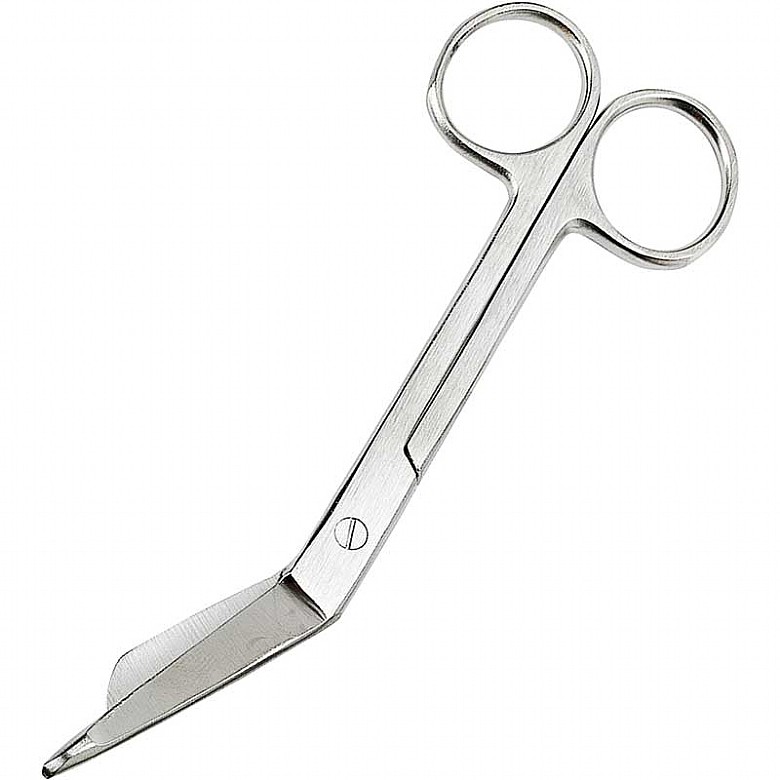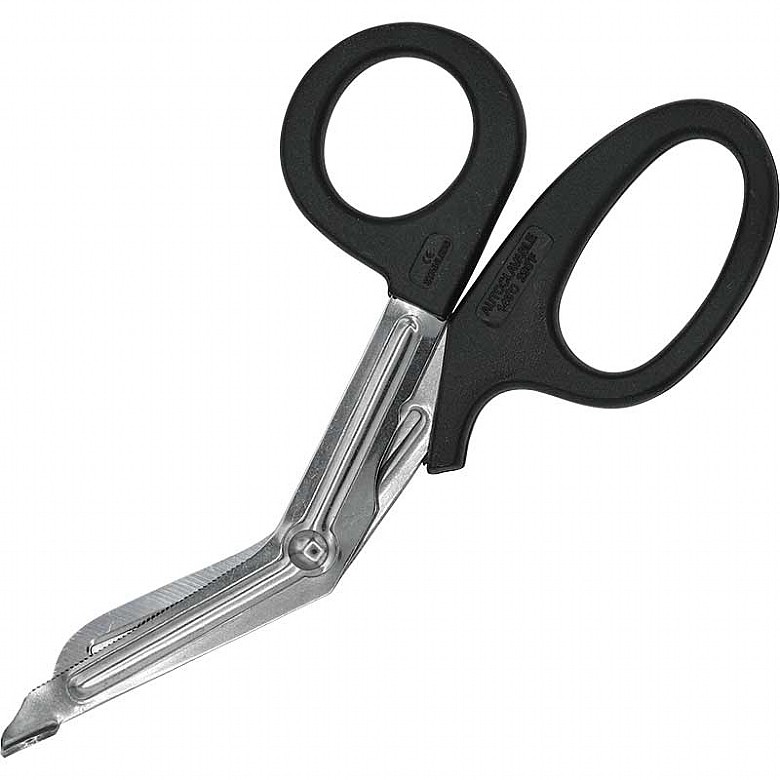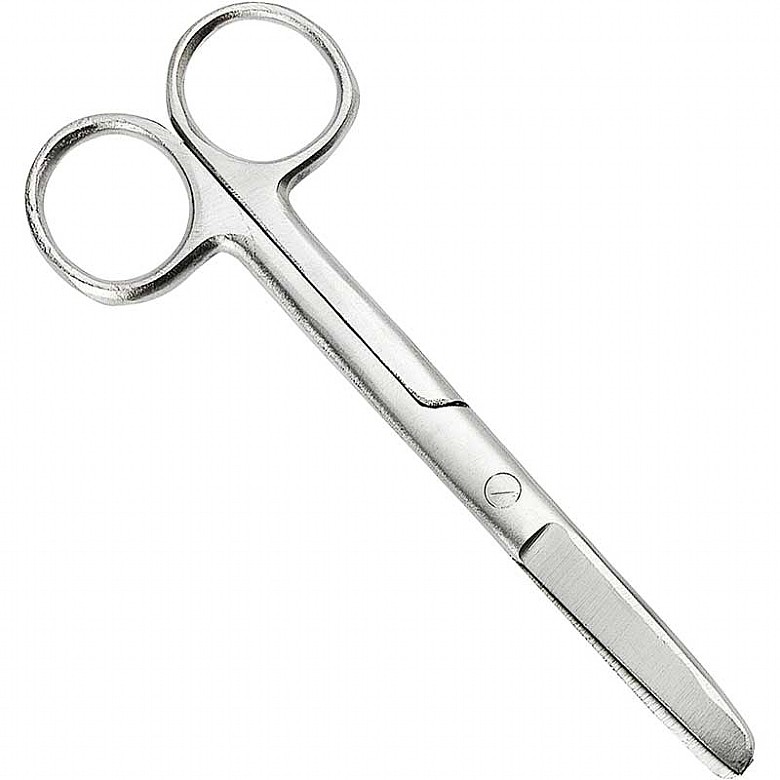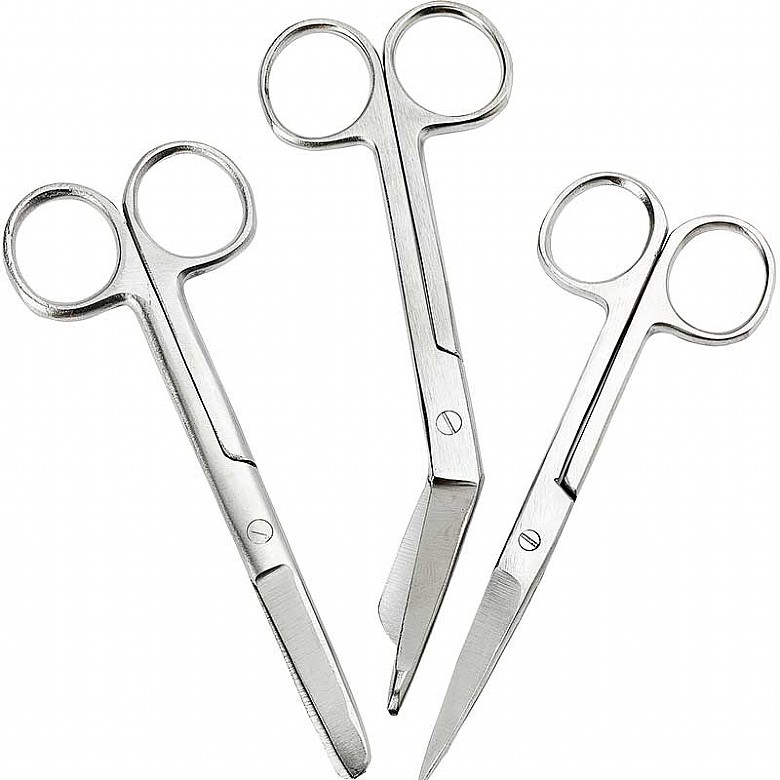
First aid scissors come in a wide variety of shapes and sizes to serve multiple purposes. First aiders use bandage scissors and clothing cutters to cut dressings and bandages to the proper size and to remove clothing that prevents treatment. Surgical scissors are used by surgeons to open body tissue during procedures.
What are bandage scissors?
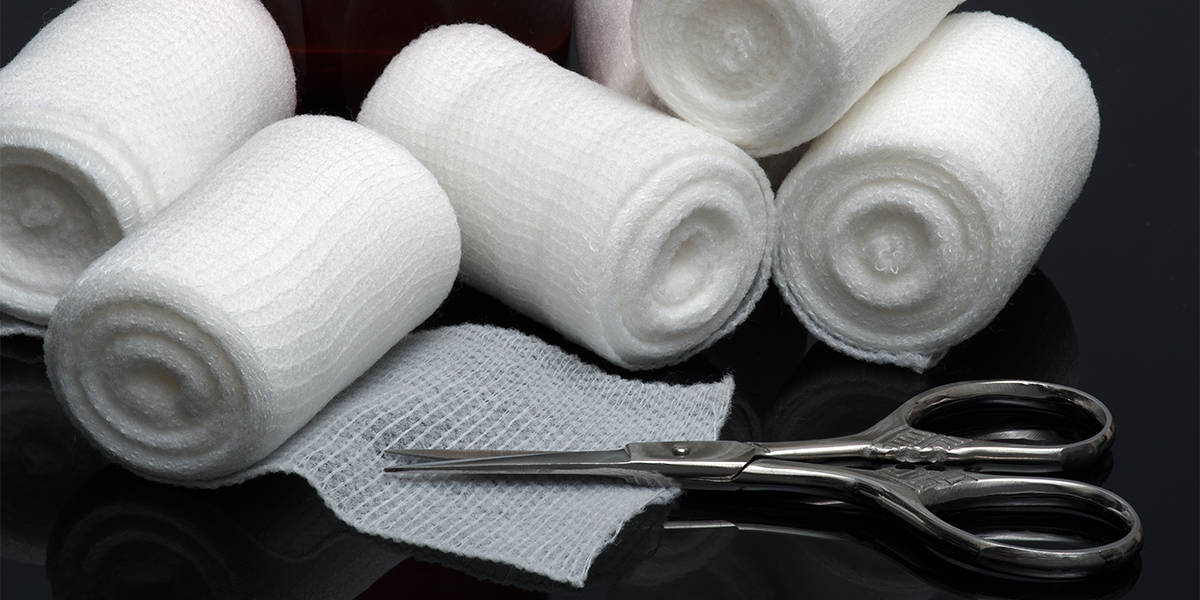
Bandage scissors have a variety of uses. Nurses and paramedics will usually have a pair of scissors handy to cut bandages to size or to remove clothing from a casualty.
They have the following features:
- Angled blades: Removing dressings requires scissors that can be slid underneath the bandage, close to the patient’s skin – an angled blade makes this easier.
- Blunt ends: Cutting bandages or clothing close to a casualty’s skin can be dangerous with pointed scissors, especially if the casualty is in distress. Blunt ends protect the casualty from accidental cuts and stabs.
- Short and thick blades: Bandage scissors usually have shorter and thicker blades compared to normal scissors.
What's the difference between bandage scissors and clothing cutters?
While bandage scissors and clothing cutters serve similar purposes, they do have some differences. Clothing cutters tend to be larger and more robust than bandage scissors, as they are designed to cut through thick clothing like jackets and coats. Bandage scissors are usually stainless steel, which allows the blades to be more easily sterilised when necessary.Clothing cutters and bandage scissors can share uses, but it’s important to know the limitations of each tool.
What are scissors used for in first aid?
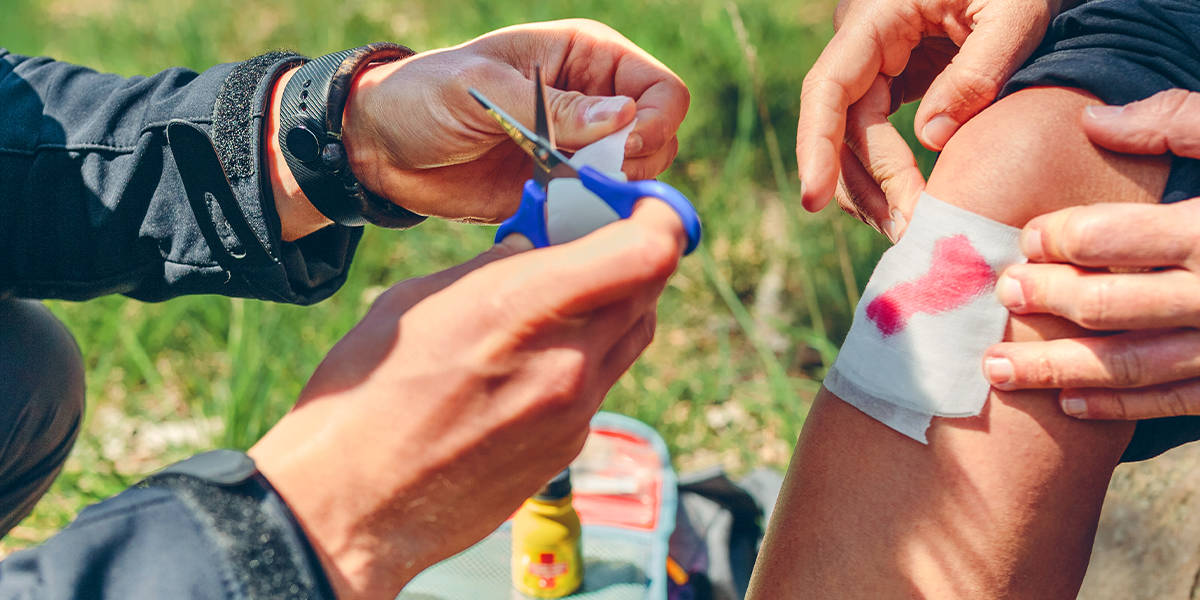
A good pair of first aid scissors are one of the most important tools for responders to carry to a casualty. They have two main uses:
- Cutting bandages to size: Bandage scissors are specially designed to make cutting bandages to size or removing bandages from a wound as easy as possible.
- Removing a casualty’s clothing: Clothing can obscure wounds and hinder a responder’s ability to treat a casualty. It’s in these cases that clothing cutters are useful to quickly remove problematic clothing from a casualty.
- To remove a seatbelt causing issues for a casualty: Clothing cutters can be used in lieu of a standard seatbelt cutter to remove a restrictive seatbelt from yourself or from a casualty.
- As an improvised windlass: In an emergency, you can create an improvised tourniquet by tying a triangular bandage around a limb and knotting one end around the centre of a pair of first aid scissors. You can then twist the scissors as you would a windlass to stop bleeding.
Key Takeaways
Scissors are a versatile first aid tool that should be in every responder’s first aid kit. There are different types of scissors that serve different purposes, and while they can sometimes be used interchangeably, knowing their differences is important. They serve two main purposes in first aid: cutting bandages and removing clothing, but they can be used in other ways in an emergency.
Read our other blogs for more information on first aid or contact us for further advice and information on our products.
About the author:
Jo Stokes is a writer, marketer and trained first aider at First Aid Online.
Find out more about Jo.
By Jo Stokes


